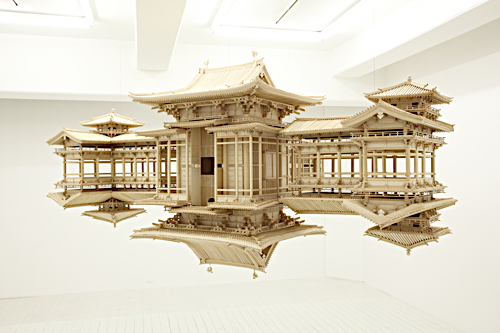
| ||||||
| Level 100 | ||||||
|
| ||||||
| Level 300 | ||||||
| ||||||
| Level 400 | ||||||
|
| ||||||
| History of Art | ||||||
| LS&A | ||||||
| University of Michigan | ||||||
| Back to the list of courses |
SUMMER
Special Topics: Architecture in East Asia – Form, Function, and Meaning

Castles, gardens, pagodas: these are some of the most recognizable building forms associated with the architectural traditions in China, Korea, and Japan. Yet when, how, and why did these edifices filter into popular impressions of East Asia? As one of the most visible means of human's interaction with the environment, architecture is a practice that traverses aesthetic, functional, and ideological concerns. This course therefore not only offers an overview of architectural developments in East Asia from early times to the present, but it also calls attention to differences across times, spaces, and historical contexts that instigated shifts in the materials, forms, and functions of architecture. Adopting a thematic approach, this course addresses issues ranging from the public display of power, expressions of religious worldviews, conflicts and diplomacy, to how social differences based on class, gender, nationality, and ethnicity have been articulated in the built environment. We will consider cross-cultural interactions throughout these thematic units, with the aim to delineate ways in which architecture is employed to construct and validate cultural differences. Particular attention will be paid to how architectural forms travel as concepts that are translated and circulated in other media like print, painting, decorative objects, photography, and film. Built, unrealized, imaginary, and ruined edifices will be considered concurrently to explore how architecture participates in defining both "tradition" and "modernity" in East Asia. The course concludes with a critical appraisal of the notion of "global architecture" in the postmodern world. Case studies involving international events like architectural biennials, the Olympics, and the World Cups will be employed to further demonstrate the entanglement of power, diplomacy, and the built environment.
All are welcome to attend. All readings are in English. No prior knowledge of architecture, art history, studio art, or any East Asian language is necessary or assumed.
Estimated Cost of Materials: $50-$100.
HISTART Category for Concentration Distributions: C. Asia (Including China, Japan, South and Southeast Asia, and The Pacific), 2. Medieval, 3. Early Modern.